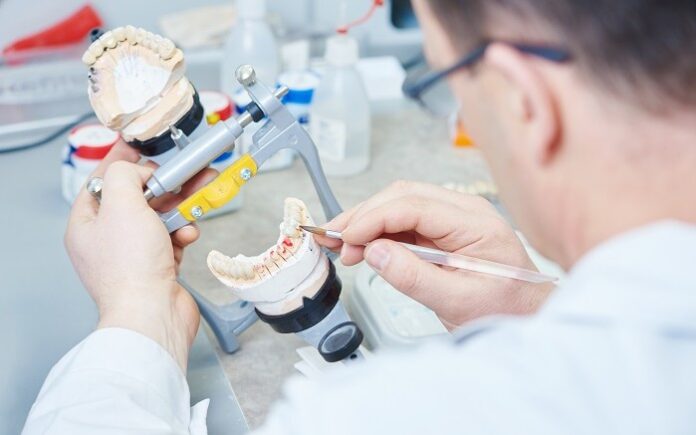Single crown fabrication can easily be among the most popular corrective technique in the United States. Since their introduction into the dental business, zirconia crowns have become a popular alternative for dentists seeking the most technologically sophisticated metal-free dental restorations. It has proven to be a significant advancement since a larger range of reduction tricks are now accessible, allowing for more shade variations to closely match actual teeth. Zirconia’s structural attributes allow for sturdiness, endurance, precision-fitting crowns, and better aesthetic appeal. When dental practitioners wish to maximize the effectiveness of zirconia restorations while keeping treatment duration to a minimum, specific prepping and procedures might be necessitated. While searching for appropriate zirconia restorations, always remember that Burbank Dental Lab is the best for zirconia crowns.
- Pros Of Zirconia Dental Crowns
- The strength and durability of zirconia are two of its primary features. Consider the amount of force your back teeth apply to the food you’re chewing. Zirconia may be a suitable choice for crowns towards the rear of your mouth since they need to be composed of a robust substance. In addition, because zirconia is so sturdy, your dentist will not have to prepare your tooth as much.
- Many dentists use zirconia because of its biocompatibility, which means it is less likely to cause the body to produce a reaction or immunological response like inflammation. Recent research backs this up, and it also discovered just a minor level of toxicity.
- Based on established research, zirconia-based crowns may perform almost as well as their metal-based counterparts over the period of around half a decade. And zirconia crowns, also known as monolithic zirconia abutments, are particularly long-lasting.
- Instead of sharing an imprint of your tooth with a lab to have a crown manufactured, many dentists can fabricate zirconia crowns within their clinics. The crown can then be cemented into place during a single appointment. To create the crown from a bigger piece of zirconia, dentists use dental milling equipment. This method avoids the requirement for two trips to complete the surgery. However, not every dentist clinic possesses this equipment or offers zirconia crowns.
- The Importance Of Preparation Design For Zirconia Crowns
- Any zirconia crown can be less stressed as an outcome of even edges. Such reduced stress may minimize the likelihood of fractures.
- The consistent decrease produces optimal zirconia strength.
- Zirconia fixes might necessitate a passive fitment.
- Appropriate reduction yields the finest aesthetic outcomes.
- Preparation evenness can be checked more accurately using digital scanners.
- Recommendations For Preparing Frontal Zirconia Crowns
While preparing a tooth for a frontal zirconia crown, you may need to ensure adequate space for the wall thickness to be at least 0.3 mm and preferably around 1.0 mm to 1.5 mm, or 1.8 to 2.0 mm incisal trimming. A prominently displayed and consistent circumferential chamfer with a reduction of a minimum of 0.5 mm at the gingival edge might be required. The vertical and lateral prep of the tooth may need a 5° inclination, and a bevel may not be recommended. All incisal contours should be rounded, and the linguals of the frontals should be reduced to achieve concave sides around the tongue area.
- Recommendations For Preparing Posterior Zirconia Crowns
When preparing a tooth for a posterior Zirconia crown, you must leave enough space for the wall thickness to be at least 0.5 mm and ideally between 1 mm and 1.5 mm, or 1.5 to 2 mm occlusal reduction. Taper the preparation between 4° and 8°. An easily visible and consistent annular chamfer is really essential, as is a gingival space reduction of a minimum of 0.5 mm. A bevel may not be advisable, just as similar to the preparation guidelines for anterior zirconia crowns. More importantly, smoothness of the occlusal edges needs to be ensured before proceeding.
- Reduction Cost For A Zirconia Crown
Several dental preparations may not meet the recognized criteria for zirconia crown integrity, sturdiness, and long-term abrasion resistance. According to crown prep research, the depth of a zirconia crown’s peripheral chamfer should be a minimum of 0.6 mm for optimal solidity. A zirconia crown should also have an occlusal reduction in excess of 1.5 mm to provide for acceptable restorative material toughness and adequate occlusal separation for a better fit.
As a result, the cost of acquiring any type of dental crown may vary based on the material chosen and the amount of preparation necessary. Furthermore, in some cases, a core setup is necessary to safeguard the tooth’s integrity until a crown can be implanted. Zirconia crowns are often more expensive than other dental crowns, such as metal or ceramic. This cost is largely attributed to the pretreatment reduction procedure for a zirconia crown. Based on your area, they can vary in cost from $1,000 to $2,500.





























